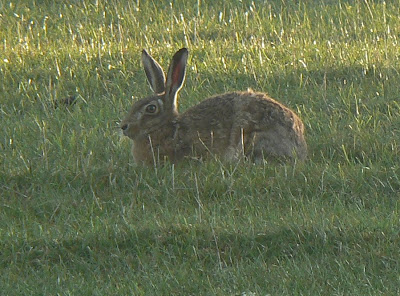The changing light always makes a visit worthwhile when 'nothing' else is happening. But there is always something when you look long and hard enough (not that I ever do!).
One of the few places you get such a long flat open vista. Incredibly 'members of the family' had cattle on this site over 300 years ago! Maybe I should give history a wave.
I am used to seeing Redshank on river estuaries, on the beach and they are remarkably well patterned for their environment. From above a raptor would have difficulty spotting this as a target.
Grey Partridge are difficult to approach literally running off as you approach, and if you get too close, zoom off at zero feet, putting any radar to shame!
Being in the right place at the right time helps, but it inevitably means an early start. The problem always is, the sun rises in the east EVERY DAY! (and strangely enough sets in the west, funny that).
Sometimes understanding bird behaviour helps, adult lapwings attacking approaching gulls can be a sign that youngsters are not far away. Of course this dull black birds have much more going for them than one realise, the irridescence created by light reflection and all that. As a young lad, I have abiding memories of seeing a lapwing nest with three eggs in the dip in the ground created by cattle feet, when off into the countryside very early one morning — a long long time ago — needless to say that field is now housing. Gotta live somewhere I guess.
Corvids, Rooks, Carrion Crows and Magpies can be a problem, as indeed predatory gulls, but sometimes even they are pre-occupied, this magpie busy collected worms for the offspring.
 As the sun sets, the shadows lengthen.
As the sun sets, the shadows lengthen.















































